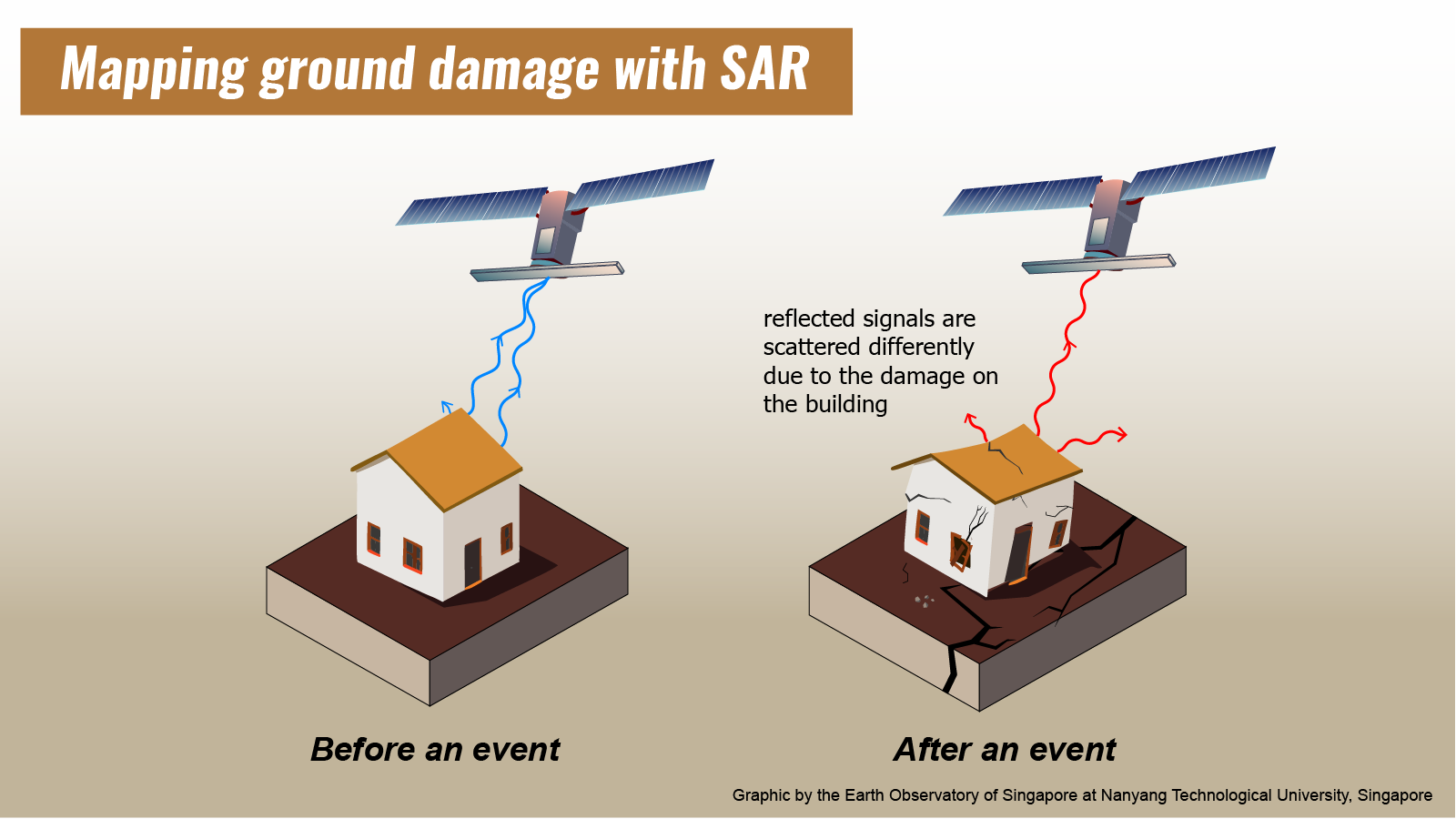Synthetic Aperture Radar (SAR) is a remote sensing technology that uses radar to create high-resolution images of the Earth's surface. SAR sensors emit radar pulses towards the Earth's surface and record the reflections that bounce back. This information can be used to map the Earth’s surface.
SAR provides extensive coverage across the globe and can penetrate through clouds, which allows it to provide round-the-clock monitoring regardless of weather conditions.
By comparing different images of the same area through time, SAR can be used to monitor changes of the Earth’s surface. Applications include monitoring land subsidence for tectonic research, monitoring the subsidence of peatlands to estimate carbon flux, and the creation of damage proxy maps to estimate the impact of natural hazards.

SAR signals scatter differently when a building is damaged. By comparing two scenes of SAR imagery, scientists can estimate the impacts of natural hazards. This technique is used by the EOS Remote Sensing Lab to support disaster response efforts. (Source: Jay Wong/Earth Observatory of Singapore)